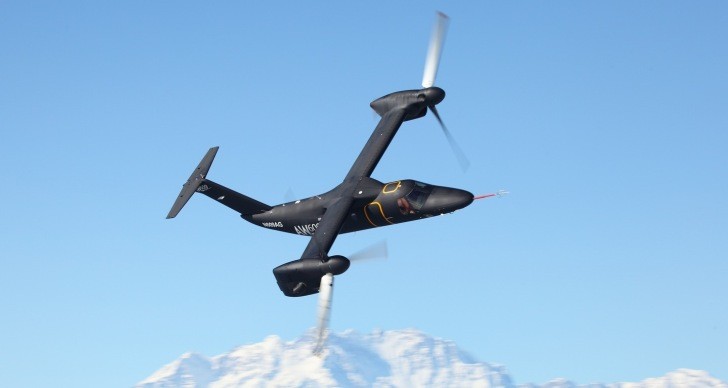We still remember how crazy the world was over vertical takeoff machines with a tilt rotor design. Some believed they would replace the helicopter as a VIP shuttle, but so far the navy’s V-22 Osprey has been the only large-scale application.
The Agusta Westland AW609 could change all that. It’s a civilian machine that takes off vertically like a helicopter and transitions into a normal airplane by swiveling the engine pods forward.
Recent updates were provided by its makers during the Heli-Expo 2015. The company has two working prototypes — one based in Arlington, Texas, and the other in Italy. Together, they have logged nearly 1,200 flight hours, and the big news is that the manufacturers should have them certified for civilian use in 2017.
We’ve gotten used to cars and the way they now take as little as two years to develop. However, in the world of aviation, things are different. The AW609 first flight was way back in 2003, and it’s only now nearing completion.
The specs are impressive. It can carry an 18,000-pound (8,165 kilograms) maximum weight, reach 275 knots (509 km/h; 316 mph) equivalent airspeed, and go as high as 25,000 feet. Future developments include underwing auxiliary fuel tanks that will increase range, boosting the AW609’s maximum range to 1,100 nautical miles (2,038 kilometers).
If more speed is what’s needed six passengers can travel over a range of 800 nautical miles (1,482 kilometers) in a little over 3 hours. Power comes from two Pratt & Whitney Canada PT6C-67A turboshaft engines that produce 1,940 hp (1,447 kW) each.
They are placed in moving pods on the tips of the wings and connected to gigantic 3-bladed propellers. In helicopter mode, the rotors can be positioned between a 75- and 95-degree angle from the horizontal. In airplane mode, the they are rotated forward and locked in position at a zero-degree angle. However, landing with them in this position is not possible.
Recent updates were provided by its makers during the Heli-Expo 2015. The company has two working prototypes — one based in Arlington, Texas, and the other in Italy. Together, they have logged nearly 1,200 flight hours, and the big news is that the manufacturers should have them certified for civilian use in 2017.
We’ve gotten used to cars and the way they now take as little as two years to develop. However, in the world of aviation, things are different. The AW609 first flight was way back in 2003, and it’s only now nearing completion.
The specs are impressive. It can carry an 18,000-pound (8,165 kilograms) maximum weight, reach 275 knots (509 km/h; 316 mph) equivalent airspeed, and go as high as 25,000 feet. Future developments include underwing auxiliary fuel tanks that will increase range, boosting the AW609’s maximum range to 1,100 nautical miles (2,038 kilometers).
If more speed is what’s needed six passengers can travel over a range of 800 nautical miles (1,482 kilometers) in a little over 3 hours. Power comes from two Pratt & Whitney Canada PT6C-67A turboshaft engines that produce 1,940 hp (1,447 kW) each.
They are placed in moving pods on the tips of the wings and connected to gigantic 3-bladed propellers. In helicopter mode, the rotors can be positioned between a 75- and 95-degree angle from the horizontal. In airplane mode, the they are rotated forward and locked in position at a zero-degree angle. However, landing with them in this position is not possible.











